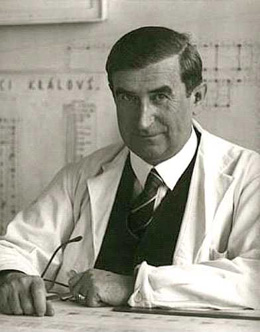
135 years ago, the co-founder of Cubism, Josef Gočár, was born
 |
He began studying at the School of Applied Arts in Prague only after completing his apprenticeship as a goldsmith, hailing from Semín near Přelouč. After early folkloristic works, the student of Professor Jan Kotěra leaned towards European modernism and after 1911 focused on cubism, at the birth of which he played a significant role.
In the 1920s, Gočár designed a viable regulatory plan for Hradec Králové, where a whole range of his buildings emerged, such as Rašín Grammar School shaped like an open book (now J. K. Tyl Grammar School). By that time, he was already a professor at the Prague Academy of Fine Arts and was creating in the spirit of functionalism. His best constructivist work is perhaps the Church of St. Wenceslas in Prague-Vršovice and the ensemble of family villas in Baba. In 2000, Gočár, who died on September 10, 1945, in Jičín, was chosen in a poll as the greatest personality of Czech architecture in the 20th century.
The English translation is powered by AI tool. Switch to Czech to view the original text source.
0 comments
add comment











